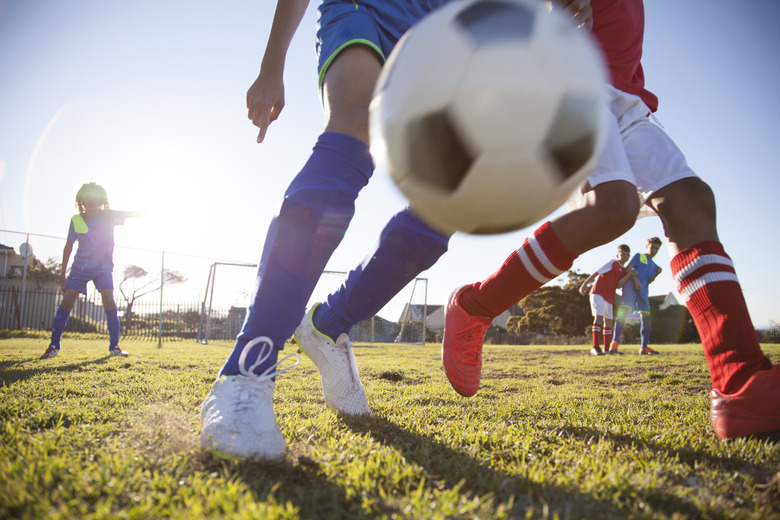Newton's Laws Of Motion For Kids
Seemingly sophisticated science concepts are often deceptively simple enough to bring down to a child's level. Subjects such as physics are fair game for a child's learning as long as you explain terms and ideas in a kid-friendly way. If you're trying to teach a young student Newton's Laws of Motion, use age-appropriate vocabulary, illustrative examples and hands-on techniques.
Stop and Start
Stop and Start
Newton's first law of motion states that an object won't move by itself and that, once in motion, it won't stop unless some force acts upon it. Help your young student to understand this concept with a simple stop and start exploration. Set a bouncy ball, marble or baseball on a flat surface such as a table. Position the ball so that it is completely motionless. Ask the child what she thinks the ball will do. Let her sit and watch the ball for a minute or two, noting that it stays motionless. Have her gently push the ball, setting it in motion. Next, have her put her hand up and stop the ball. This shows the child that the force of her hand will stop the ball's motion.
Fast and Far
Fast and Far
Newton's second law states that when you push an object with more force it will move faster and farther away. Go outside and set up a t-ball set or pick up a bat and baseball. The young student can step up to the plate and take a swing at the ball. Make a comparison, having the child lightly hit the ball first and then strike it with more force later on. Measure how far the ball travels in each instance and mark it with a chalk or tape line. Compare the distances, pointing out the harder swing pushed the ball much farther than the lighter one.
Equal and Opposite
Equal and Opposite
The third law of motion states that for every action, or motion, there is an equal and opposite reaction. Illustrate the action-reaction principle to your young student by setting up a row of motionless balls on a flat outdoor surface such as concrete. Place at least two soccer-sized balls in a vertical line. Give the student another ball and have him roll it — putting it in motion — toward the other balls. When it strikes the other balls its momentum will transfer from the first to the second, causing them to move in the opposite direction.
Vocabulary View
Vocabulary View
There's no need to completely dial down the science vocabulary for kids who are learning about Newton's laws. Instead of swapping real science words for childish lingo, consider the context of the vocabulary you use and how you present it to the child. For example, as the student moves a ball, tell her that she is setting the object in "motion" or tell her that the push she gives it is the "force." Other words to work in while the student is exploring and experimenting are momentum and velocity.
Cite This Article
MLA
Loop, Erica. "Newton's Laws Of Motion For Kids" sciencing.com, https://www.sciencing.com/newtons-laws-of-motion-for-kids-12745624/. 25 June 2018.
APA
Loop, Erica. (2018, June 25). Newton's Laws Of Motion For Kids. sciencing.com. Retrieved from https://www.sciencing.com/newtons-laws-of-motion-for-kids-12745624/
Chicago
Loop, Erica. Newton's Laws Of Motion For Kids last modified August 30, 2022. https://www.sciencing.com/newtons-laws-of-motion-for-kids-12745624/
